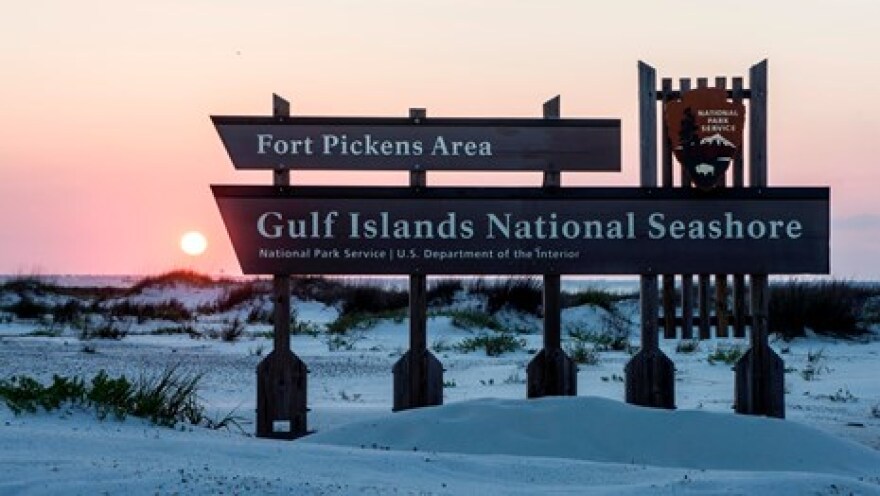Visitors to Gulf Islands National Seashore are encountering some new rules and regs, aimed at giving better protection to nesting shorebirds.
“This is something that we do annually, especially since we’ve had funding to do so,” said Ashley Warren, a biologist at GINS.
The $900,000 came from the Deepwater Horizon Natural Damage Assessment Project – funded by some of the money from the BP oil spill. It compensates the public for damage to natural resources and the loss of related services.
“The current project started in 2020 and it allow for some of these increased enforcement,” Warren said. “The fact that it’s been beefed-up now is more so that we have extra funding.”
Some of the changes to give additional protections to shorebird nests actually began before the start of this particular project, at the start of the breeding season in February and March, and running through August. For example, the speed limit over a part of County Road 399 that runs through the park was dropped from 35 mph to 25.
“In order to allow drivers to watch for the birds that might be crossing the road, and some other things that have been started before this is the installation of some temporary speed bumps,” said Warren. “And some very large informational signs at each entrance to the different units of the park.”

Other features went online when the NRDA money was put in the bank.
“Increased the actual patrols and enforcement of those lower speed limits; so we do have extra patrols in that area,” Warren said. “We’re going to be installing some of the radar ‘Your Speed’ signs, similar to what you see often around school zones.”
If you’re exploring the park on foot and are suddenly besieged by flocks of birds, it is not a remake of a classic Alfred Hitchcock movie. It means you are near an unmarked nesting area or young chicks.
“If visitors find themselves walking through that might not be posted, but they start seeing these little white and black, small squeaky birds trying to dive-bomb what they see as a threat,” said Warren, “they should stop what they’re doing and backtrack out of the area very carefully, watching where they step for these very well-camouflaged eggs and chicks.”
But, Warren is quick to add that there’s plenty of elbow – and wing – room at the massive seashore.
“Last year, we put out 11 miles of this posting and ended up closing in about 285 acres,” said Warren. “And that was only 12 percent of the potential habitat in the park.”
And how is the 2021 nesting season going? Warren says that depends on the four species that use GINS as their seasonal homes. Case in point, the snowy plover and the Wilson’s plovers – which are solitary nesters.
“So far this year, it’s a little rougher for them than last year; we’re trying to figure out exactly why, but it may be due to some habitat changes caused by Hurricane Sally last year,” Warren speculated. “Or maybe a lot of the severe weather we’ve been having early in late spring or early summer this year.”
As mentioned, Least Terns also inhabit the park each year, as do Black Skimmers – the so-called “colonial nesters.”
“They nest in large colonies so they can try to protect their young in a group,” said biologist Ashley Warren. “Where there being zero nests two weeks ago, within the last two weeks about 300 nests [were built] between the three units of Gulf Islands in Florida. They’ve just kind of exploded on the beach so far.”
More information is available at nps.gov/guis.

